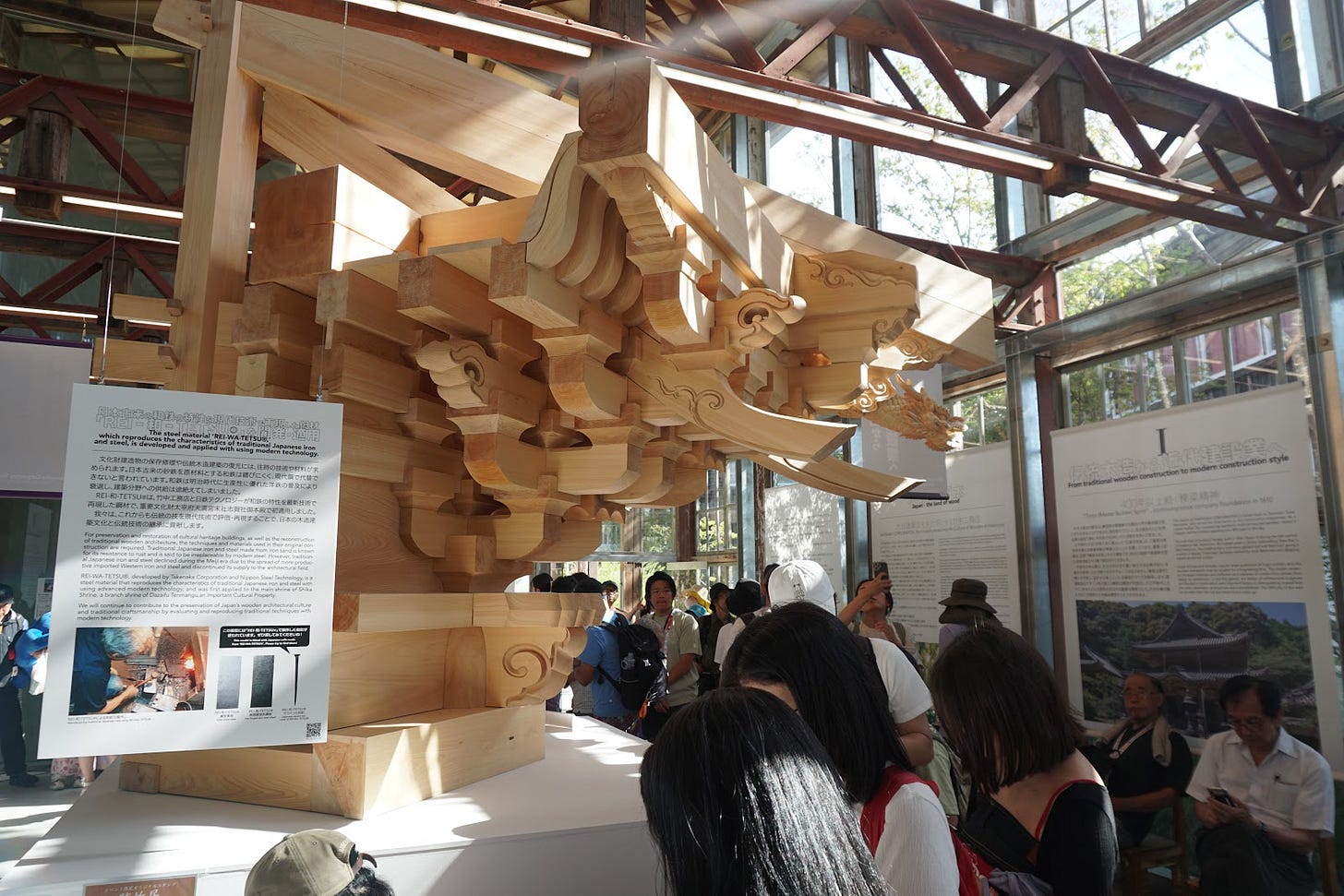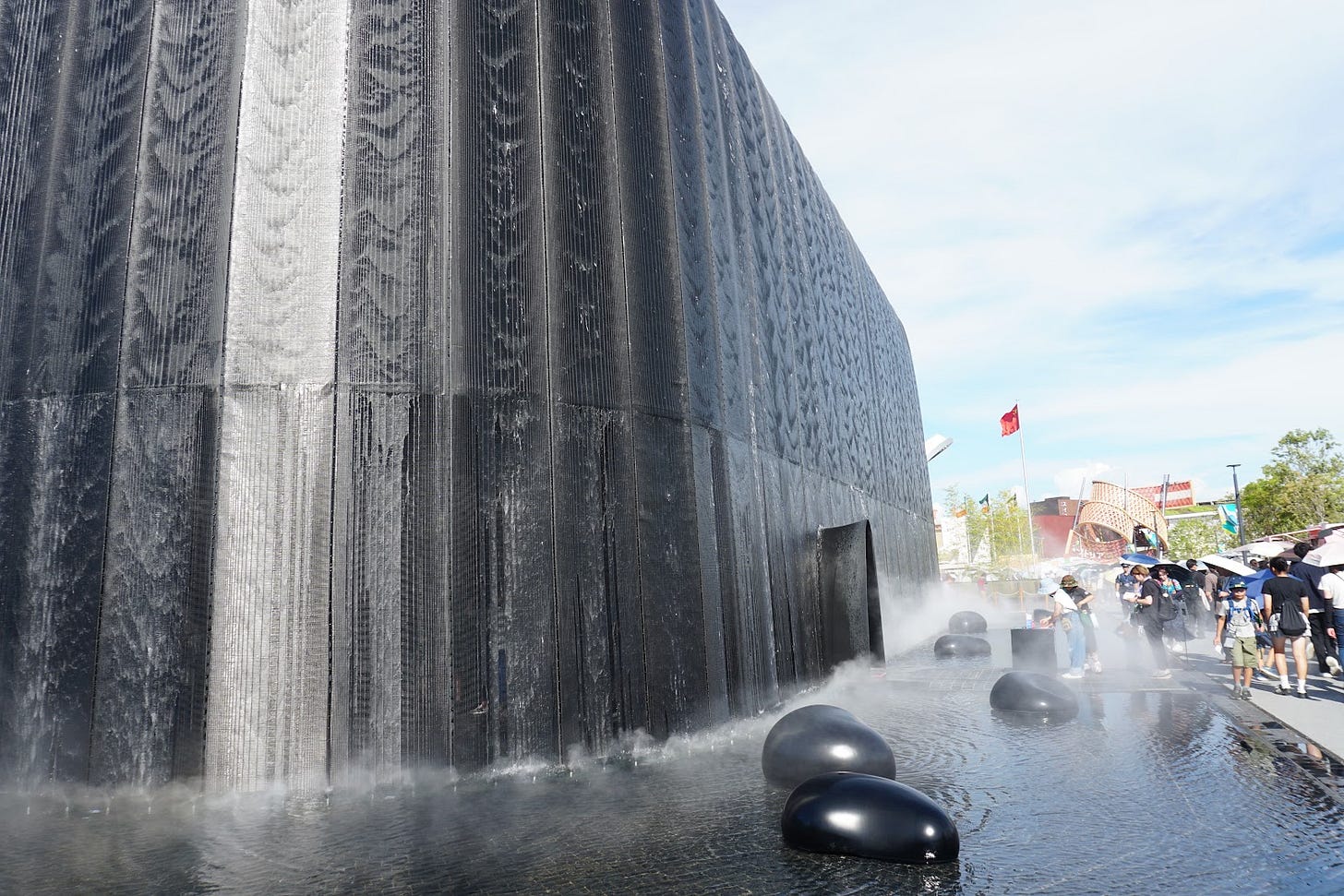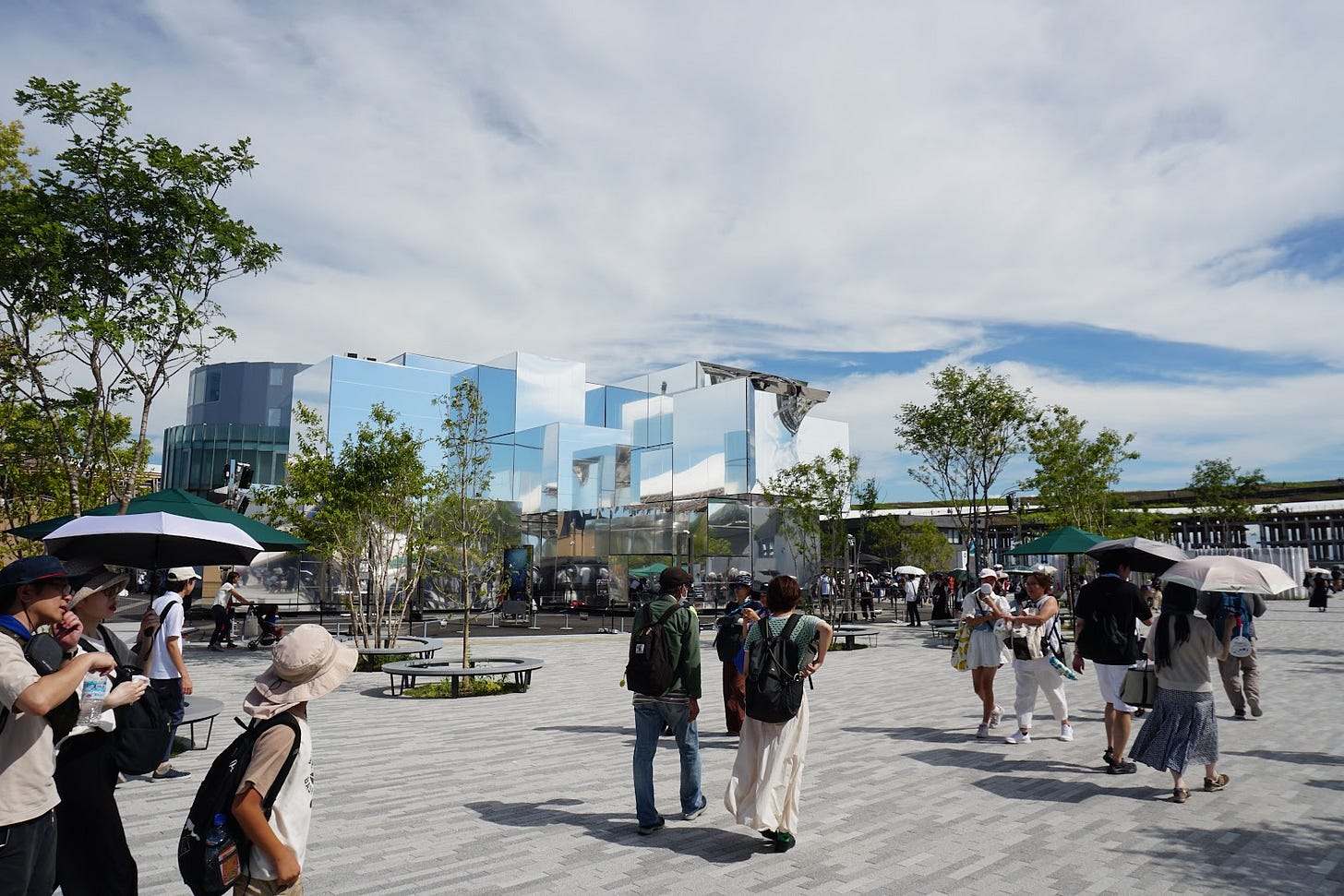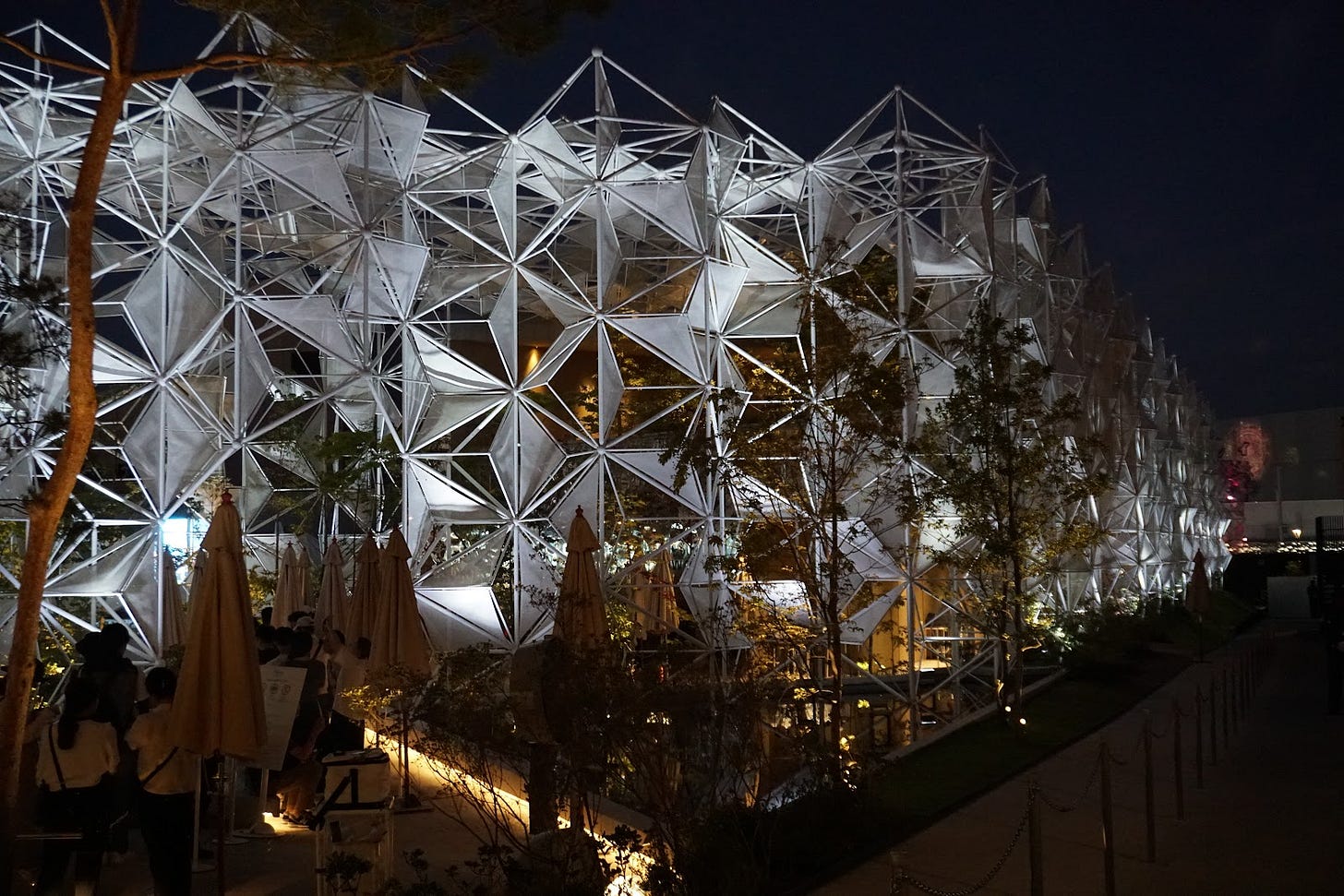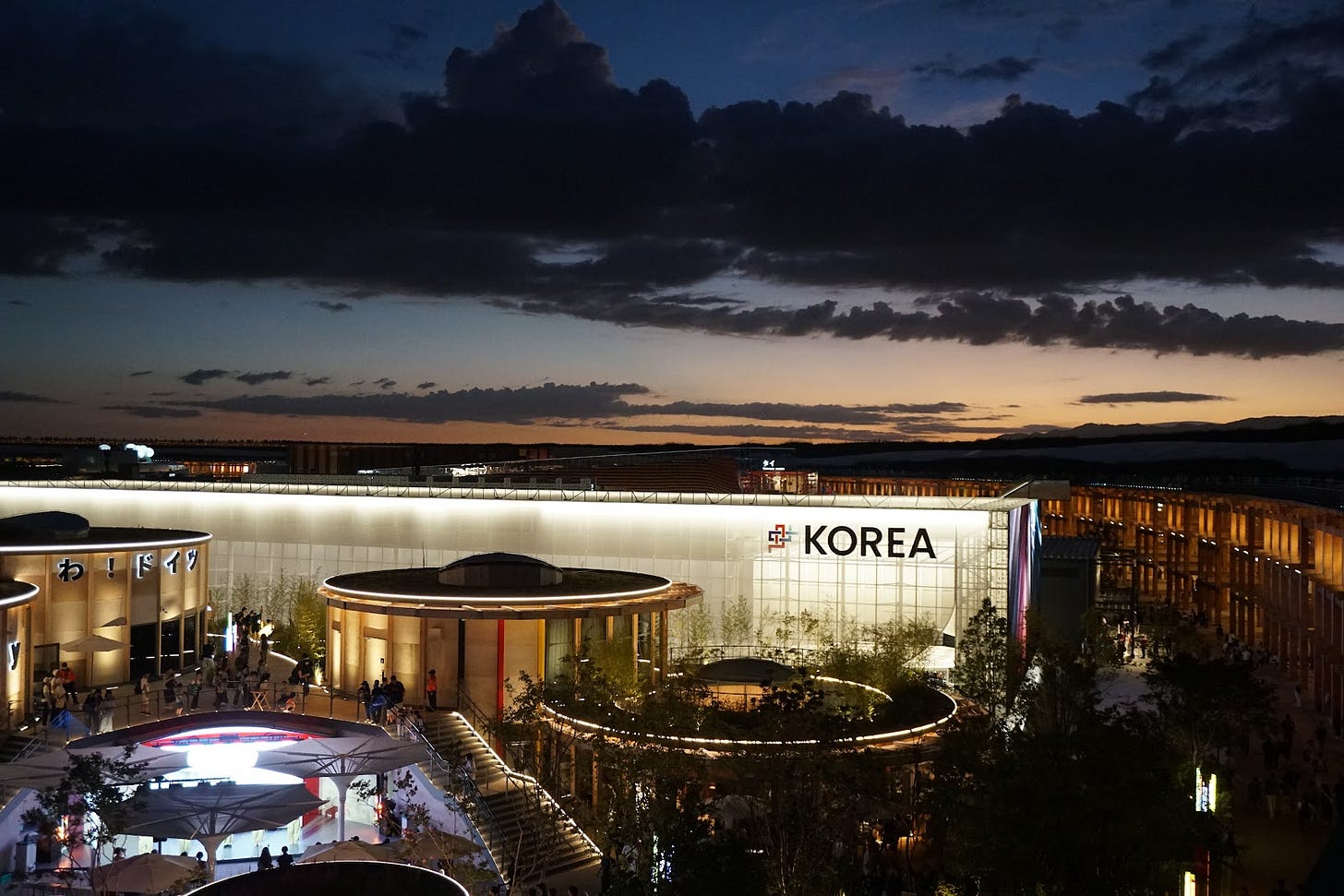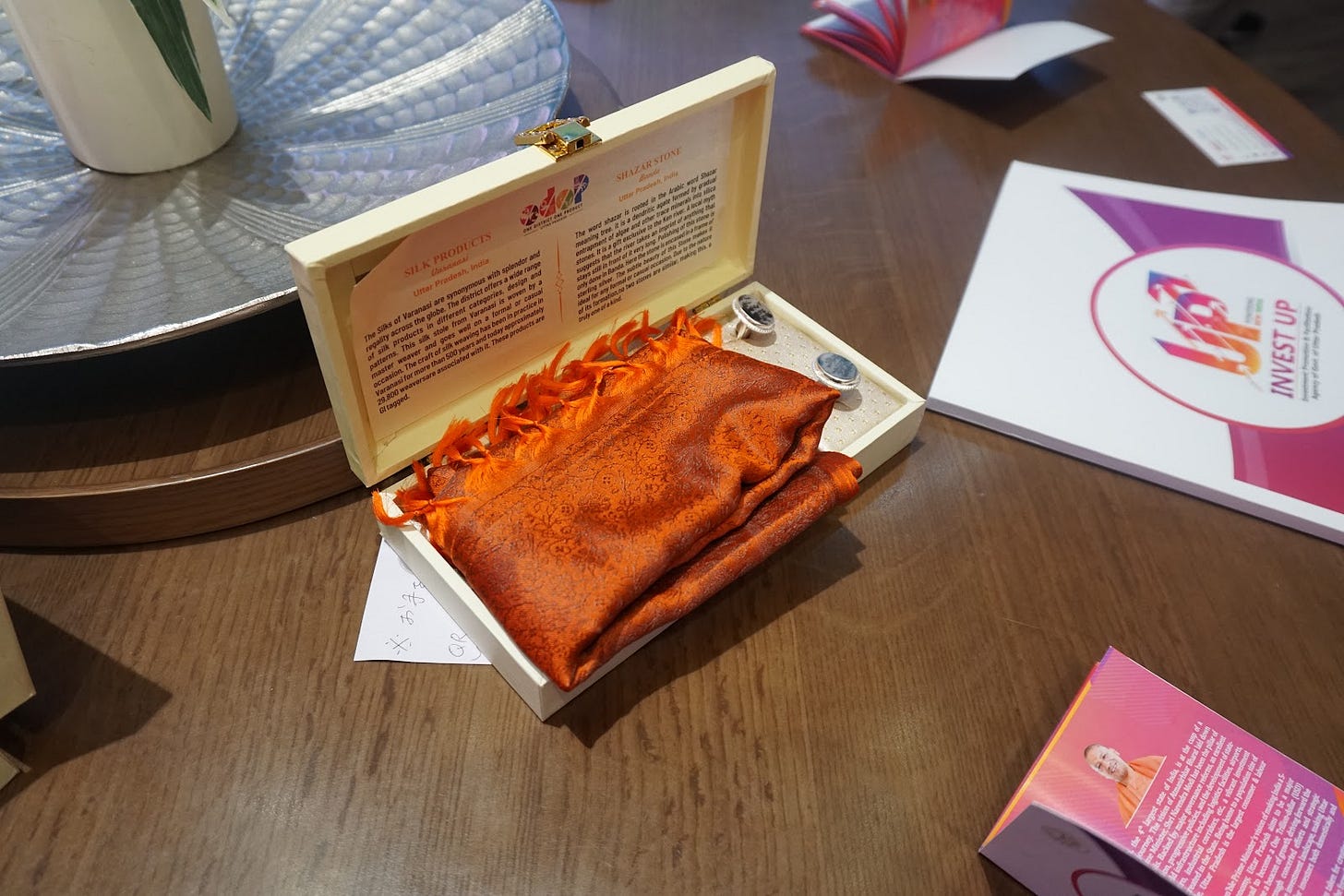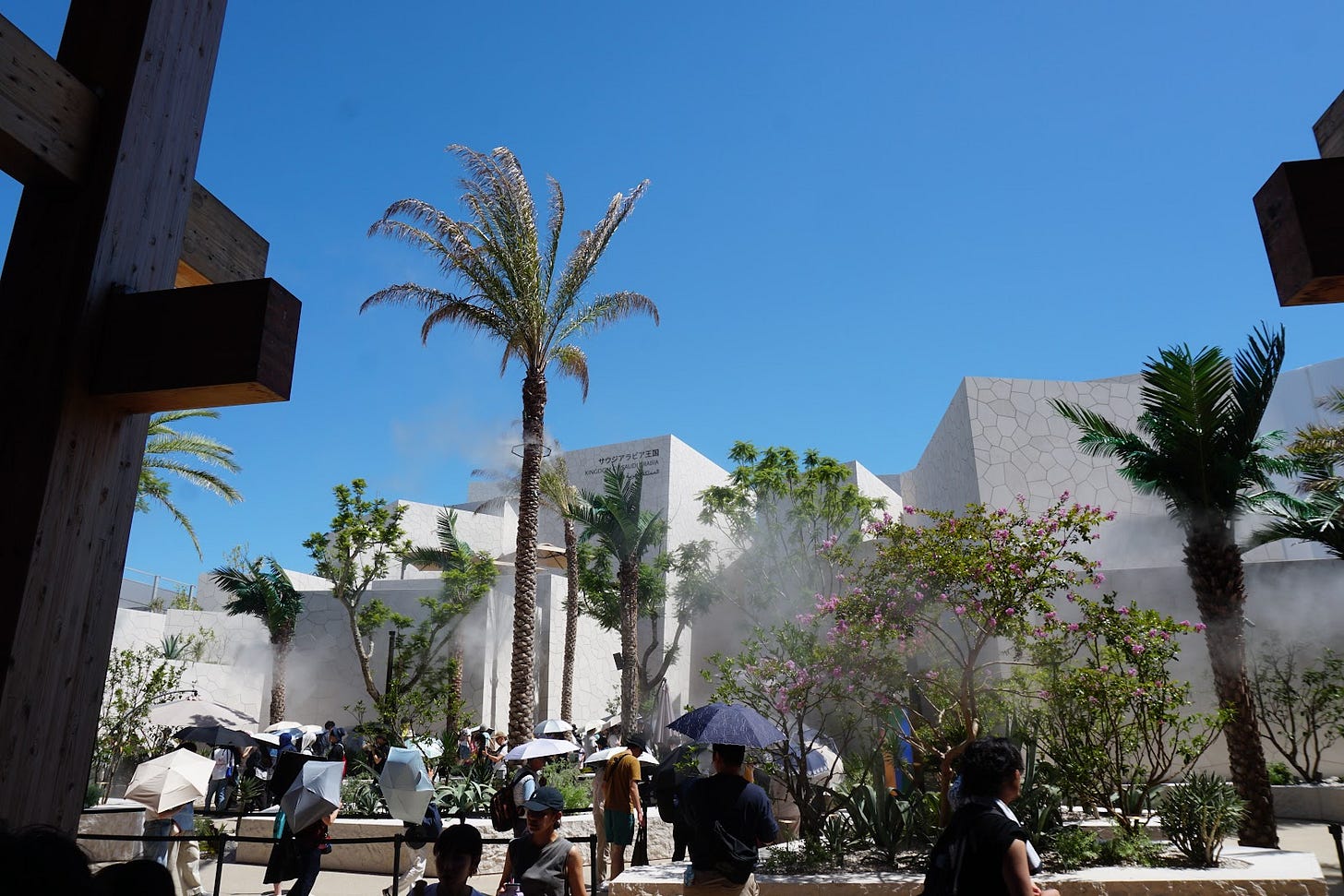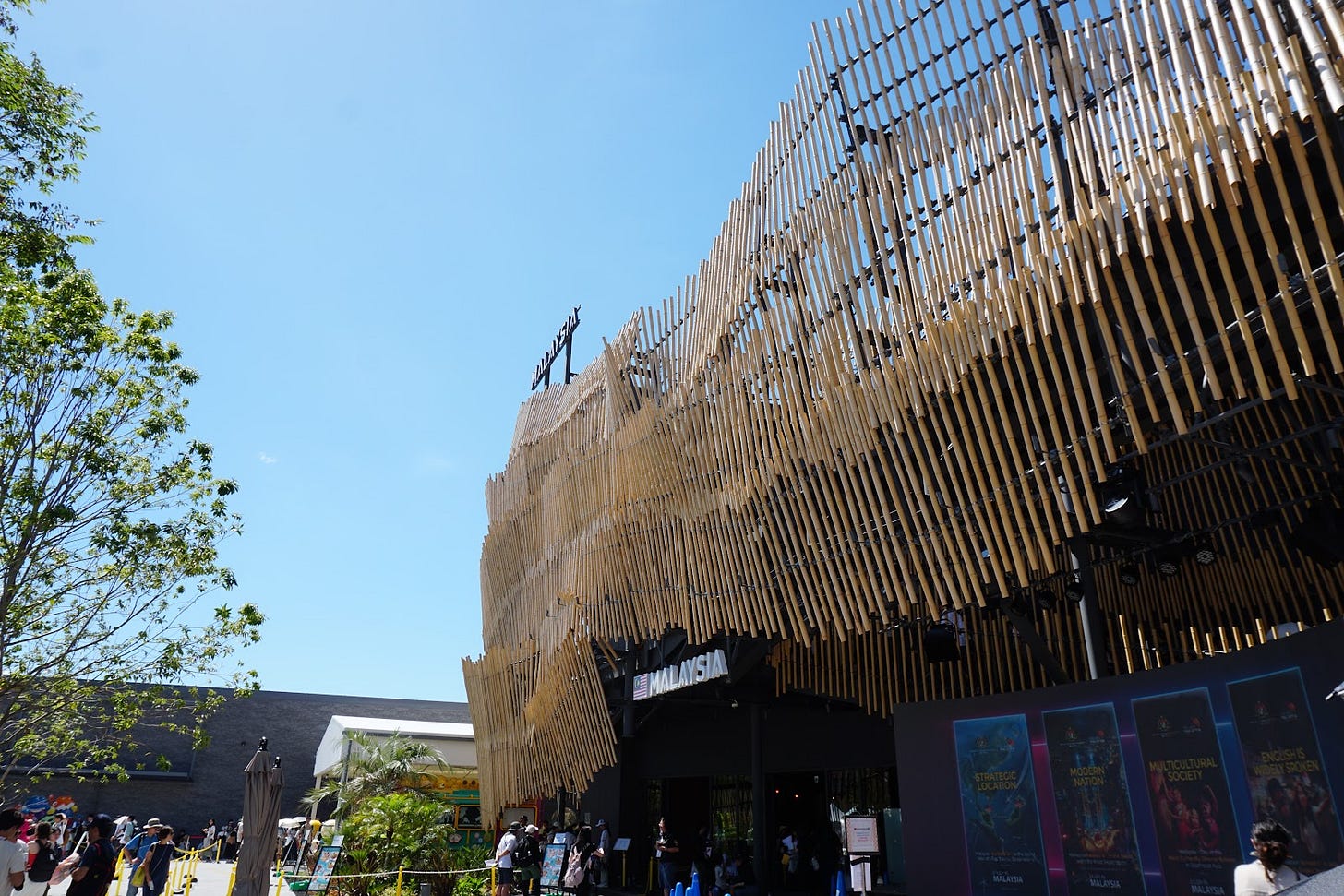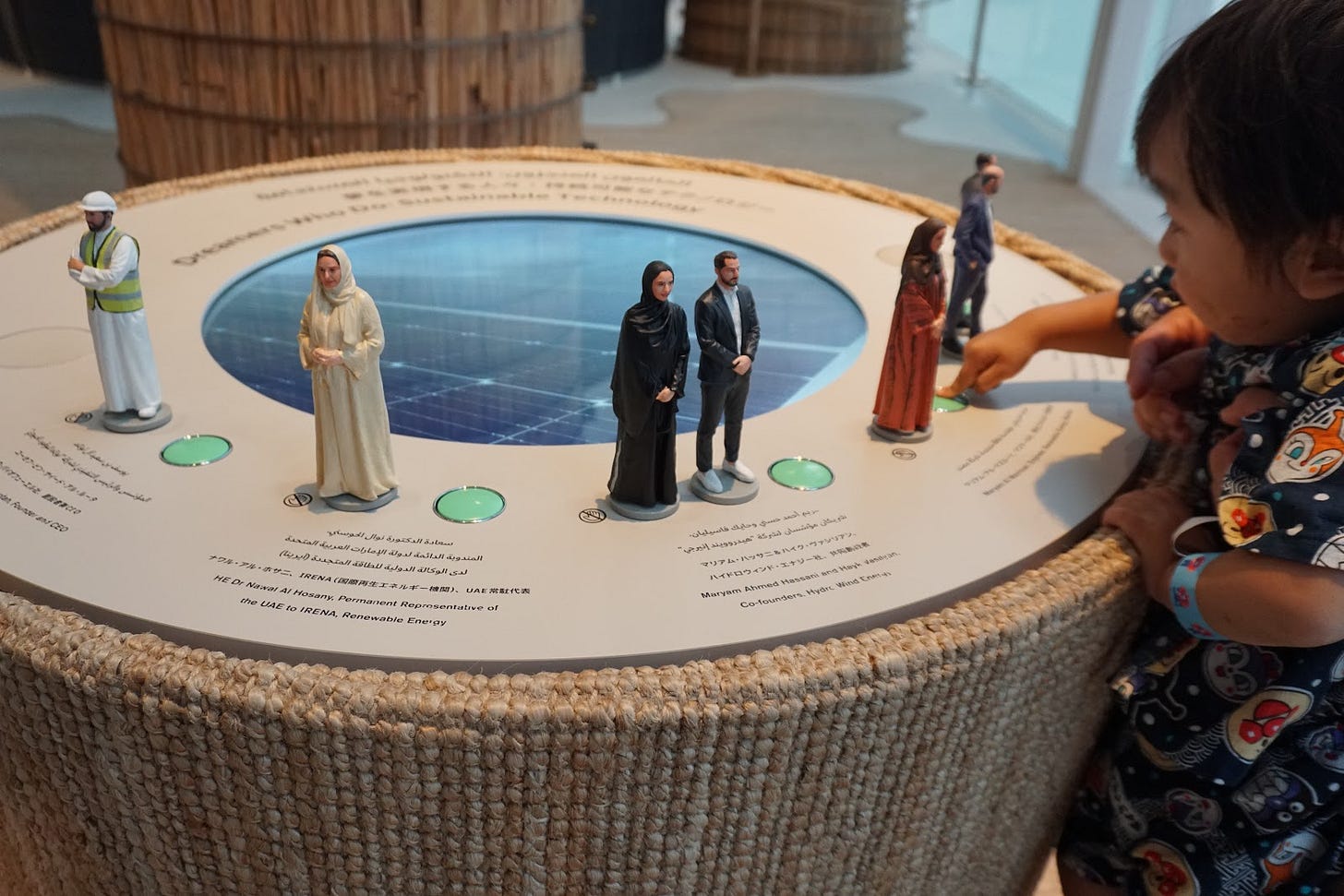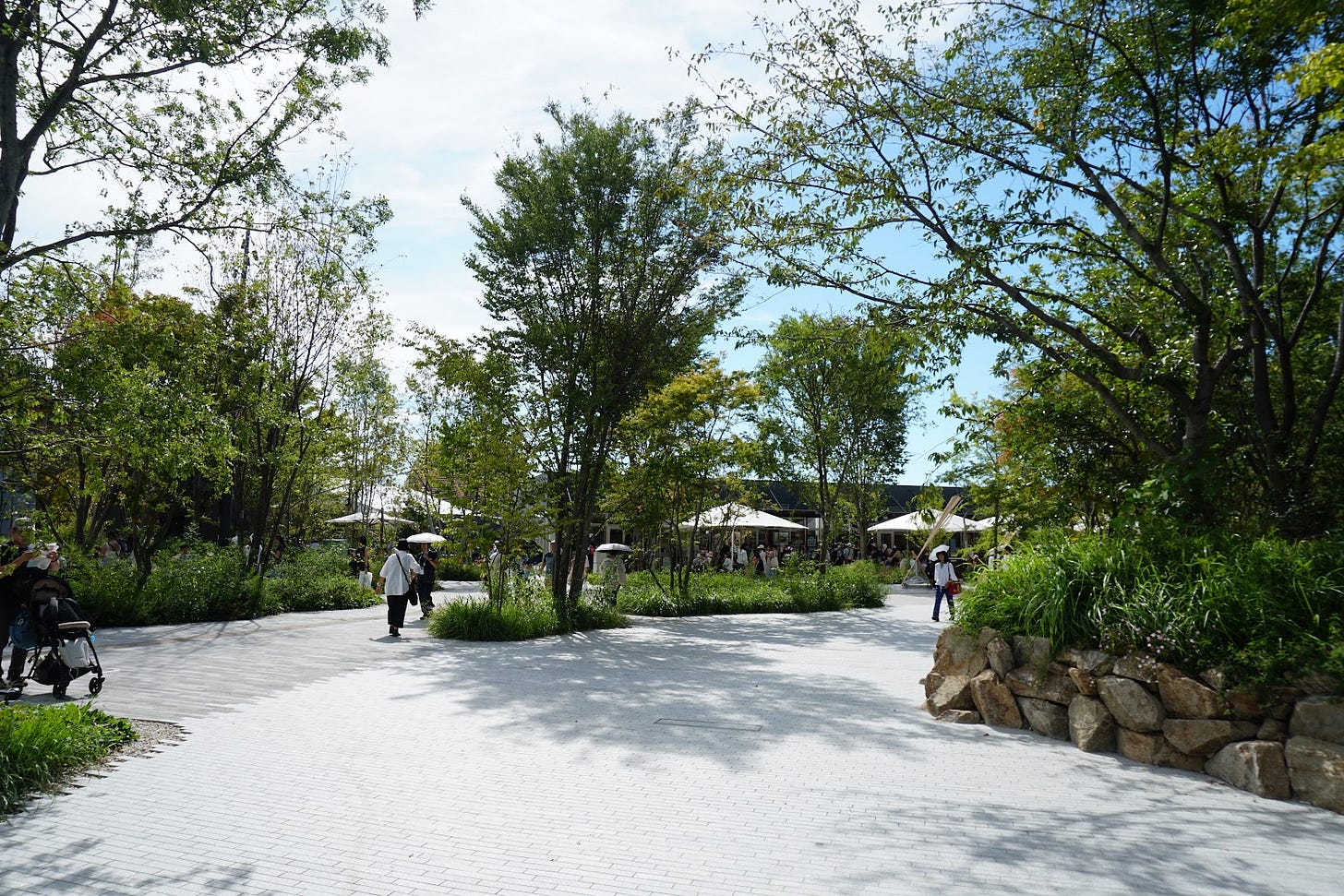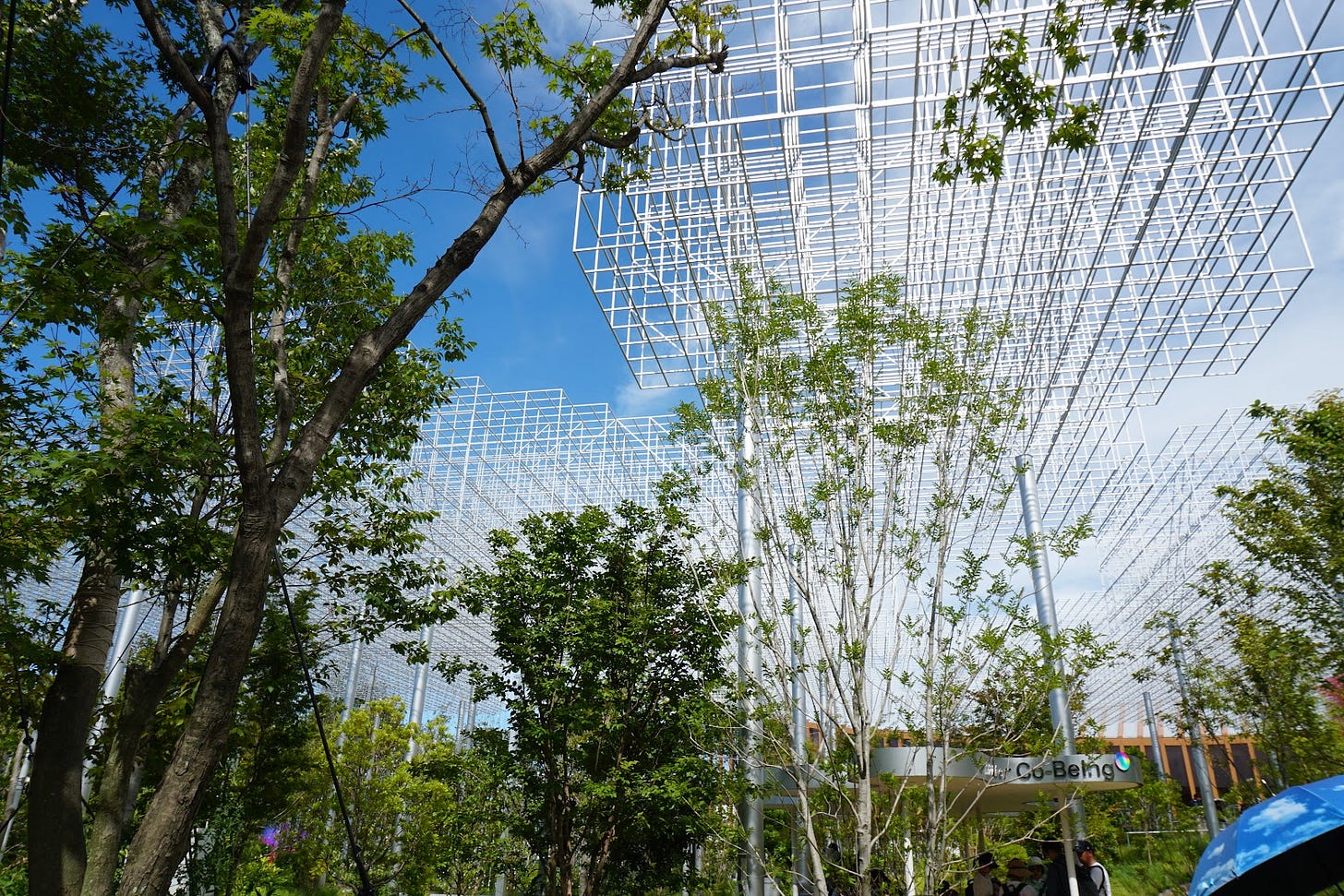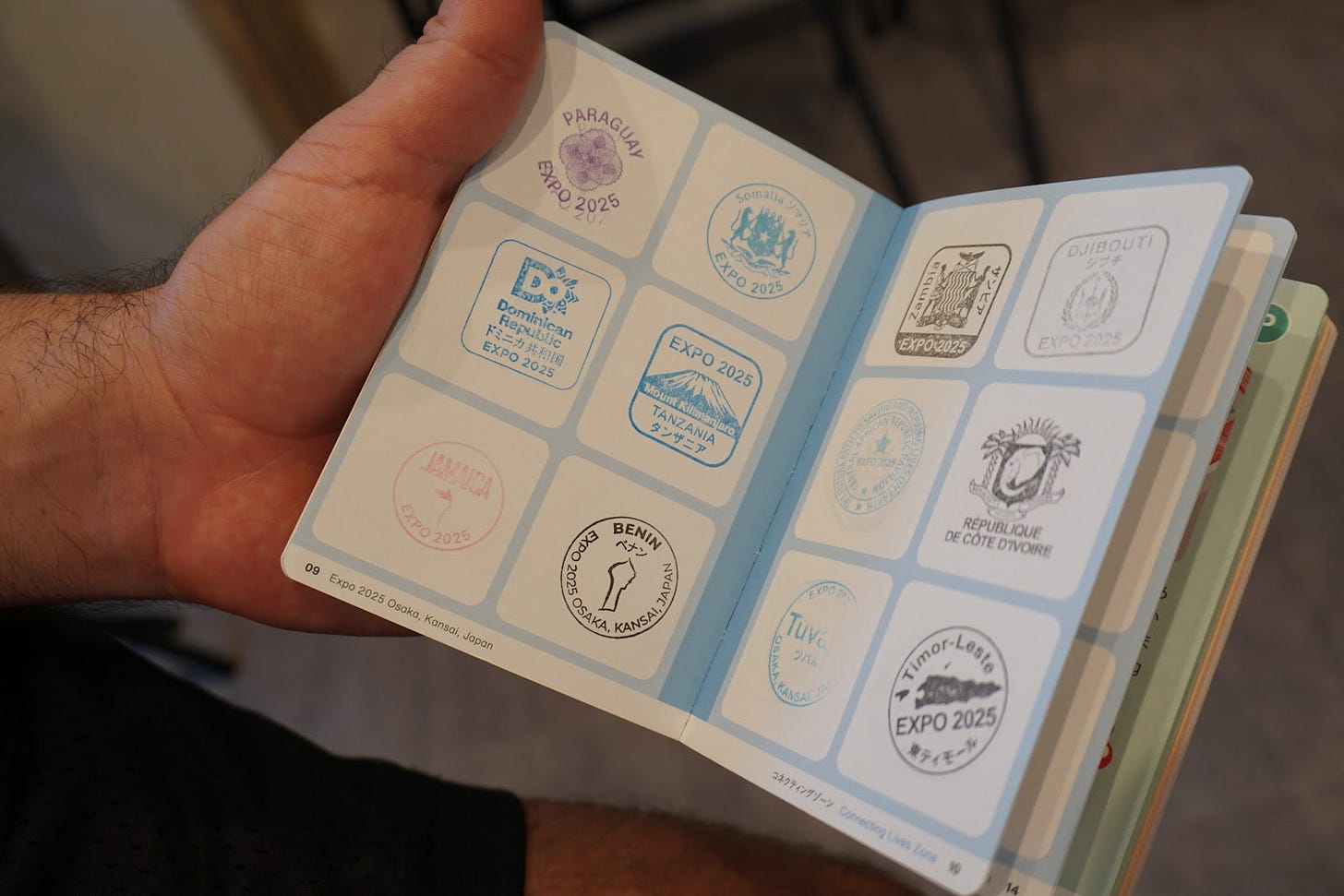Hello From Expo 25: Connection, Culture & Co-Being
Osaka’s first World Expo since 1970, assessed from the visitor’s point of view.
A World Expo is a place where all nations come together and present their latest innovations and celebrate their cultural uniqueness. To some, especially of the host country, the Expo is associated with a sense of national pride. It is an opportunity to demonstrate the country’s progress. For Japan, it is a chance to showcase, with pomp and pageantry, its remarkable journey from struggling with the aftermath of war to becoming a global technological and financial hub.
The last time Osaka held a World Expo was in 1970, during Japan’s economic miracle — a historic comeback from the desolation of the country just 25 years prior. Accounts from that Expo are filled with joy and excitement. Expo 70 marked Japan’s position on the global stage as a leader in the Asia-Pacific. In hindsight, it also offered many Japanese a glimpse into what an international stage looked like. Expo 70 was the first time many Japanese people met foreigners and encountered the concept of globalization. Many of the same sentiments are in the air with the return of Expo 25 to Osaka.
With over 152 participating countries, Expo 25 aims to present a new future for the world: one of harmony and technological innovation for the betterment of all. There are 188 pavilions in total. Apart from the 152 country-specific pavilions, there are over 13 pavilions hosted by private Japanese sectors, 8 signature pavilions, and 15 other pavilions hosted by organizations and the Japanese government. Each pavilion helps visitors envision how society can evolve sustainably to meet humanity’s long-term needs through promoting the core theme of “Designing Future Society for Our Lives.”
A Place Where You Within Me Encounters Me Within You
This is a theme of the Dialogue Theater pavilion, one of the Signature Pavilions, aiming to provoke thoughts of interpersonal communication while creating beautiful scenery in the heart of Expo 25. This pavilion showcases mesmerizing Japanese traditional woodcraft in its design, construction, and the pieces on display. Many of the Signature Pavilions, such as the Dialogue Theater, were constructed with the hope that they would prompt visitors to reflect on their personal connections and the impact of technological advancements; these pavilions are sending a message of unity to a world polarized by differences in politics and opinions.
Another Signature Pavilion that is quite eye-catching is the Future of Life Pavilion, where Japan’s technological advancements were presented. In contrast to Expo 70, where more outward-looking innovations were presented, Japan chose to showcase technologies that would support the livelihood of the people themselves. Beside it is the Null2 Pavilion, which utilizes mirror reflections to create an immersive experience of living in harmony between nature and digital technology.
In addition to the Signature Pavilions, Japan hosted several public and private organizations that sought to exhibit their latest innovation and sustainability solutions to the visitors. One of the most notable is the Sumitomo Pavilion, which boasts a tall, uniquely shaped wood structure. Sumitomo Corporation, one of the largest Japanese conglomerates operating in virtually every industry, spread the inspirational message: “Toward a future from the forest.” Inside, visitors are invited to connect with and be part of the forest through interaction with exhibits of lush trees and smaller natural insects.
One of the most striking Signature and Domestic Pavilions, however, would be the Women’s Pavilion in collaboration with Cartier. This pavilion focuses on the challenges and inequality between gender roles that have plagued Japanese women in a male-dominated environment. Decorated with fruit-bearing plants and flowers, the pavilion portrays the idea that “when women thrive, society thrives” while exhibiting achievements and battles over better women’s representation in Japan. This exhibit reinforces one of the strongest messages being conveyed at Expo 25: equality for all human beings, not just for one gender in particular.
Unity in Diversity
Surrounding the main area of Expo 25 is the “Grand Ring,” built on a concept of harmonizing multicultural diversity for greater peace and unity among the nations. It is within the corridors of this ring that you will find stunning international pavilions that present their technological advancements and achievements over the past decades.
Many of the pavilions are striking. Designs range from the minimalistic and shape-bending Qatar Pavilion to the sleek and bright Korea Pavilion. Many nations are displaying their best and most unique designs and cultures at Expo 25.
One of the notable mentions is the India Pavilion, where the theme was to “Balance Culture With Technology.” Inside, information on India’s commitment to being a global production hub is being showcased, with different ministries displaying their latest improvements each week. During the week that The Asia Cable visited, the silk producers and their products were being showcased.
Another notable pavilion is that of Saudi Arabia, just a corner away from the India Pavilion. This year, Saudi Arabia presents its signature desert landscape as the core design for its pavilion, delivering a unique yet meaningful look, with daily musical performances that allow visitors to immerse themselves in Saudi Arabia’s rich cultural heritage.
Each pavilion holds some allure. The United Arab Emirates Pavilion showcases the fabric and sustainability sectors in the UAE. Malaysia’s Pavilion showcases the educational and tourism sectors, with interior changes each week as each government sector comes in and presents its innovations. Every country represented has something unique and beautiful to offer.'
Right in the middle of the Grand Ring sits the Forest of Tranquility. A scenic garden with lush greenery with flowing waters, the Forest of Tranquility, designed by a team of internationally-renowned artists, features over 1,500 trees arranged in themes that highlight health and well-being and the future of community and mobility. Some pavilions can be found here, too, and they have matched their theme to the forest’s. One of the pavilions situated inside the forest is the Better Co-Being Pavilion. A tall, steel structure that resembles multiple trees joined together is a reflection of the theme “Resonance of Lives,” offering visitors an opportunity to experience life in the future, which will incorporate the United Nations’ Sustainable Development Goals practices into everyday living.
Visitor Interaction
Expo 25 uses visitor-centric interaction to encourage visitors to walk around and explore more areas of the Expo, not just their pavilions of interest. One such example is the Expo Stamp Passport. With the Stamp Passport, visitors are encouraged to visit almost every pavilion, as each has a unique stamp that visitors can collect and keep as souvenirs.
Scattered around Expo 25 are rest areas dedicated for visitors to take shelter from Japan’s summer sun. Some of these areas have playgrounds for families with younger kids. Despite the interesting features, family accommodations, and innovative technologies being presented, ticket sales have only recently reached the breakeven point for operating costs. The Expo has faced many challenges since its inception. In our next piece on the event, we examine why, as one senior association official comments, Expo 25 will likely not be profitable.


